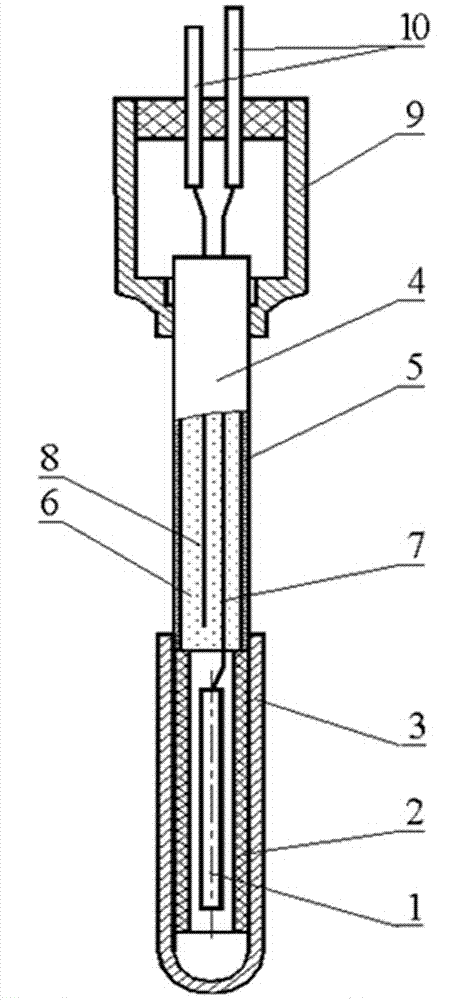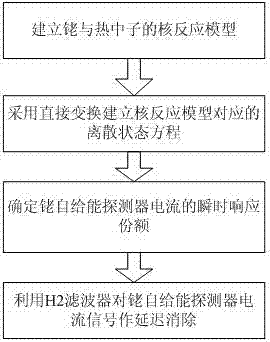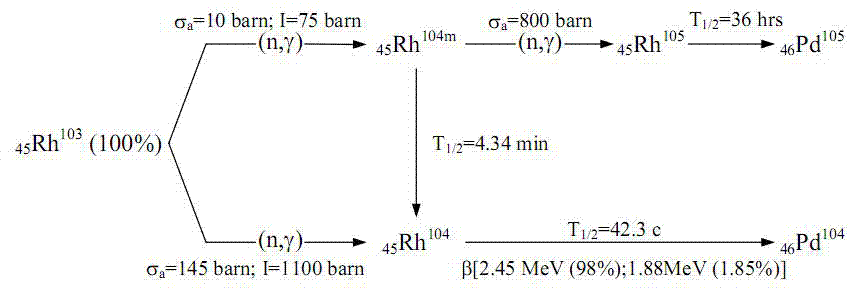H2 filtration-based signal delay elimination method for rhodium self-powered detector
A technology of self-supplied energy detector and signal delay, which is applied in the direction of radiation measurement, neutron radiation measurement, instruments, etc., and can solve problems that are difficult to apply
- Summary
- Abstract
- Description
- Claims
- Application Information
AI Technical Summary
Problems solved by technology
Method used
Image
Examples
Embodiment
[0075] Such as figure 1 The structure diagram of rhodium self-sufficient neutron detector shown, in which the names of the parts of each serial number correspond to: 1-emitter, 2-insulation layer, 3-collector, 4-wire, 5-protective shell, 6-insulation Cable, 7-current line, 8-base line, 9-sealed tube, 10-current output terminal. The rhodium self-supplied energy neutron detector, its characteristic parameter is: λ 1 =ln2 / 42.3s -1 =0.016386s -1 ,λ 2 =ln2 / 4.34 / 60s -1 =0.00266186s -1 , c=0.06, a 1 =0.879,a 2 = 0.061. image 3 It is the principle process diagram of rhodium and neutron nuclear reaction, for image 3 During the reaction process, the figure 1 device for measurement. Such as figure 2 As shown, the method for eliminating the signal delay of rhodium self-powered detectors based on H2 filtering includes the following steps carried out in sequence: step 1, establishing the nuclear reaction model of rhodium and thermal neutrons; step 2, adopting direct transform...
Embodiment 2
[0116] This embodiment makes the following further limitations on the basis of Embodiment 1: In the case of shifting, this embodiment also includes processing the original signal according to the following signal processing method: in the shifting area, assuming The sub-flux remains unchanged, and then the current signal generated by the neutron flux density is reversed, and then subtracted from the actual output current of the detector to obtain the shifting mutation component; outside the shifting area, the detector output current minus the shifting The mutation component is obtained to obtain the current signal generated by the neutron flux density, and then the delay elimination process is performed on this current signal.
[0117] The shift area design structure of this embodiment is as follows:
[0118] In the shift area (k 1 ≤k≤k 2 ), assuming that the neutron flux density remains constant, then:
[0119] n(k+1)=n(k) (13)
[0120] J ...
PUM
 Login to View More
Login to View More Abstract
Description
Claims
Application Information
 Login to View More
Login to View More - R&D
- Intellectual Property
- Life Sciences
- Materials
- Tech Scout
- Unparalleled Data Quality
- Higher Quality Content
- 60% Fewer Hallucinations
Browse by: Latest US Patents, China's latest patents, Technical Efficacy Thesaurus, Application Domain, Technology Topic, Popular Technical Reports.
© 2025 PatSnap. All rights reserved.Legal|Privacy policy|Modern Slavery Act Transparency Statement|Sitemap|About US| Contact US: help@patsnap.com



